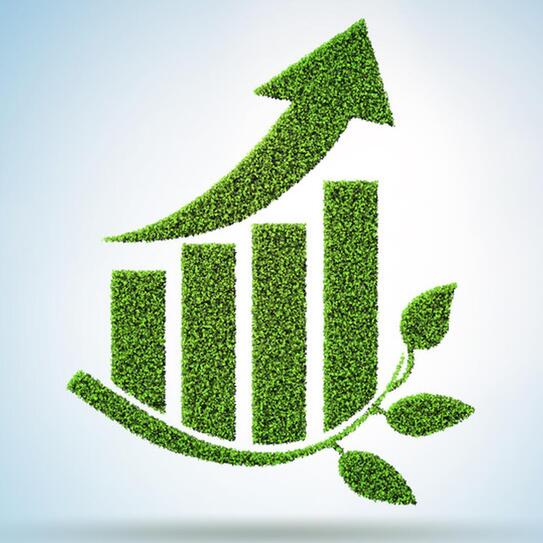The world has finally awoken to the existential imperative of securing a rapid transition to a green economy. Finance will play a pivotal role in that process. But while financial institutions have made a big show of doing their part — issuing green bonds and installing green lightbulbs — far too many continue to provide capital to the fossil-fuel industry and support other parts of the economy that are incompatible with a green transition.
Such financing actively fuels the climate crisis. Many of these investments are long-lived. Discovering, developing, and fully exploiting a new oil field takes decades, stretching well beyond the horizon in which the world must become carbon neutral to prevent catastrophic levels of warming. As such, these projects almost certainly will become “stranded assets”: holdings that have lost their value and usefulness amid the fight to save the planet.
These losses pose a risk to the investor and, potentially, to the economic system and the planet. Because most owners of stranded assets will selfishly fight to exploit their holdings no matter what, financing for these investments creates an adverse political dynamic. There are powerful lobbies committed to fighting the green transition, lest they be the ones left holding the bag. Moreover, if the transition succeeds, these same groups will demand compensation — effectively “socializing” the downside risk of investments that never should have been undertaken in the first place. If history is any guide, they will succeed in making themselves whole.
Ideally, we would simply ban such investments. But, for now, this option is politically infeasible in the United States and many other countries. Another option is to deploy regulatory tools. Since markets are short-sighted and often fail to account fully for key risks, the obligation to ensure financial stability falls on those charged with overseeing the economy, including central banks.
The 2008 financial crisis showed what can happen when even a small part of the world's asset base (US subprime mortgages) gets repriced. The repricing of assets that are likely to be affected by climate change could have systemic effects that will dwarf those of 2008. The fossil-fuel sector is just the tip of the (melting) iceberg. For example, rising sea levels and increasingly common extreme weather events, from wildfires to hurricanes, could force a sudden repricing of vast swathes of land and real estate, too.
Thus, regulators need to require full disclosure of climate risk — which includes not just physical dangers but also direct and indirect financial risks. Even if there is not unanimity about the magnitude of these risks or the pace of the coming change, prudence requires disclosure of what could happen under the plausible scenarios that have been extensively discussed in Intergovernmental Panel on Climate Change assessments and elsewhere. Moreover, a policy regime capable of achieving carbon neutrality by 2050 (combining carbon pricing with regulations) will almost surely have a significant impact on asset prices.
If the economy moves too slowly in a green direction, it increases the “transition risk.” Rather than a smooth, efficient transition to carbon neutrality, with gradual adjustments in asset prices, we could end up with a more chaotic one in which prices would jump at critical moments when markets fully internalize the reality of the change.
To mitigate this risk, finance must not only stop providing funds for investments that despoil our environment; it also must provide funds for the investments needed to move us in the right direction. We may need both carrots and sticks to nudge the industry along.
For example, banks that make climate-risky investments should be obligated to hold more reserves to reflect that risk. Investors have been warned: those who nonetheless continue to make investments in fossil fuels should not effectively be subsidized by the public through the deductibility of losses. In the US, the government underwrites the vast majority of residential mortgages; going forward, it should do so only for green mortgages (loans for homes that are well insulated and energy efficient).
Furthermore, to encourage investments that are predicated on a high carbon price, governments could issue “guarantees” that if the price of carbon turns out to be lower than expected in, say, 20 years, the investor will be compensated. This would function as a kind of insurance policy, pressing governments around the world to uphold their commitments under the Paris climate agreement.
These and other similar policies will assist the green transition. But even with such prodding, the private financial sector is unlikely to do enough on its own. Many of the critical investments that we need are long-lived, and private financial markets too often focus on the short term.
To help fill the gap, green development banks have already been created in many jurisdictions, including the state of New York. Elsewhere, existing development banks' mandates have been broadened to include green development. These institutions are making an important contribution not just in providing finance, but also in assisting with the design and structuring of the green projects themselves.
The climate crisis demands enormous economic and societal changes. We have no choice but to change how we consume, produce, and invest. The challenge is manageable. But if it is to be managed well, finance must play its part. And that will take more than a little prodding from civil society and governments alike.
Joseph E. Stiglitz, a Chazen Advisor and Nobel laureate in economics, is University Professor at Columbia University and a member of the Independent Commission for the Reform of International Corporate Taxation.
Copyright: Project Syndicate, 2021.


